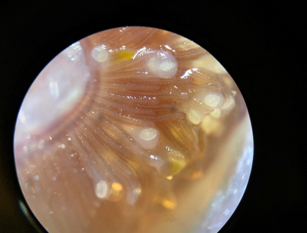Dive into Discovery: Unveiling the Spectacular New Inhabitants of Our Mussel Hatchery for the 2023 Propagation Season!

Senior Aquatic Scientist, Lance Butler and his team of student interns have completed three propagation trials so far. You may know that the life cycle of the freshwater mussel is slightly complicated. Mussel larvae called glochidia must attach to the gills of a host fish to transform into juvenile mussels.
In the lab, glochidia are flushed out of the gravid female mussel into a petri dish. We need to determine if a good percentage of the glochidia are viable. This involves doing the “salt test”. When grains of salt are added to the petri dish that contains the glochidia, healthy glochidia will close their valves.
TAKE A LOOK AT THIS VIDEO!
Once we determine there are an adequate number of healthy glochidia, they are added to a bucket with the host fish. Stirring the water in the bucket keeps the glochidia suspended and allows them to attach to the fish gills.

The picture to the left shows the encysted glochidia of the Alewife Floater mussel on the gill filaments of an Alewife host fish.
After a couple of weeks, these glochidia will metamorphose into juvenile mussels and drop off ready to start the next phase of their life.
Make sure to visit www.mightymussel.com to learn more about these amazing creatures and how they clean our rivers!
